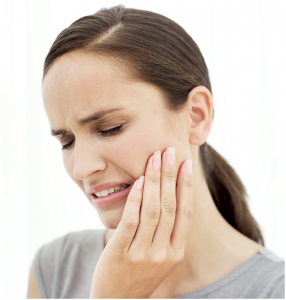Dental Emergencies Are Painful, Let us help!
Let us offer some advice on what immediate steps to take in the event of a dental emergency. Here is a quick summary of what to do for some common dental issues.
First, thoroughly rinse your mouth with warm water. Use dental floss to remove any lodged food. If your mouth is swollen, apply a cold compress to the outside of your mouth or cheek. Never put aspirin or any other painkiller against the gums near the aching tooth because it may burn the gum tissue. Call our office for an appointment as soon as possible. If the office is closed and the symptoms are severe go to the emergency room. It will not get better on it’s own and will likely get worse.
Chipped or Broken Teeth
Rinse the mouth using warm water; rinsing away any broken pieces. If there’s bleeding, apply a piece of gauze to the area for about 10 minutes or until the bleeding stops. Apply a cold compress to the outside of the mouth, cheek or lip near the broken/chipped tooth to keep any swelling down and relieve pain. Call our office for an appointment as soon as possible.
Knocked Out Tooth
Retrieve the tooth, hold it by the crown (the part that is usually exposed in the mouth), and rinse off the tooth root with water if it’s dirty. Do not scrub it or remove any attached tissue fragments. If possible, try to put the tooth back in place. Make sure it’s facing the right way. Never force it into the socket. If it’s not possible to reinsert the tooth in the socket, put the tooth in a small container of milk (or cup of water that contains a pinch of table salt, if milk is not available) or a product containing cell growth medium, such as Save-a-Tooth. In all cases, call our office as soon as possible. Knocked out teeth with the highest chances of being saved are those seen by the dentist and returned to their socket within 1 hour of being knocked out.
Extruded (partially dislodged) Tooth
Call our office for an appointment as soon as possible. Until you reach our office, to relieve pain, apply a cold compress to the outside of the mouth or cheek in the affected area. Take an over-the-counter analgesic (such as Tylenol or Advil) if needed.
Objects Caught Between Teeth
First, try using dental floss to very gently and carefully remove the object. If you can’t get the object out, Call our office for an appointment. Never use a pin or other sharp object to poke at the stuck object. These instruments can cut your gums or scratch your tooth surface.
Lost Filling
As a temporary measure, If the office is closed, use over-the-counter dental cement to fill the void. Call our office for an appointment as soon as possible.
Lost Crown
If the crown falls off, call our office for an appointment as soon as possible and bring the crown with you. If you can’t get to us right away and the tooth is causing pain, use a cotton swab to apply a little clove oil to the sensitive area (clove oil can be purchased at your local drug store or in the spice aisle of your grocery store). If possible, slip the crown back over the tooth. Before doing so, coat the inner surface with an over-the-counter dental cement, tooth paste, or Fixodent denture adhesive, to help hold the crown in place. Do not use super glue!
Abscess
Abscesses are infections that occur around the root of a tooth or in the space between the teeth and gums. Abscesses are a serious condition that can damage tissue and surrounding teeth, with the infection possibly spreading to other parts of the body if left untreated. A tooth abscess can even be life-threatening.
Because of the serious oral health and general health problems that can result from an abscess, call our office for an appointment as soon as possible if you discover a pimple-like swelling on your gum that usually is painful. In the meantime, to ease the pain and draw the pus toward the surface, try rinsing your mouth with a mild warm saltwater solution (1 teaspoon of table salt in 8 ounces of warm water) several times a day.
Soft-tissue Injuries
Injuries to the soft tissues, which include the tongue, cheeks, gums and lips, can result in bleeding. To control the bleeding, here’s what to do:
- Rinse your mouth with a mild salt-water solution.
- Use a moistened piece of gauze or tea bag to apply pressure to the bleeding site. Hold in place for 15 to 20 minutes.
- To both control bleeding and relieve pain, hold a cold compress to the outside of the mouth or cheek in the affected area for 5 to 10 minutes.
- If the bleeding doesn’t stop, call our office right away or go to a hospital emergency room. Continue to apply pressure on the bleeding site with the gauze until you can be seen and treated.



